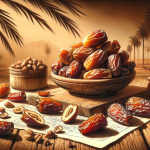Types Of Rum
Rum is a type of alcohol that is made from sugarcane juice or molasses. It is a popular drink that is enjoyed around the world in various forms. Rum has a rich history and cultural significance, with many countries claiming it as their national drink.
The production process of rum involves fermenting and distilling sugarcane juice or molasses. It is then aged in oak barrels to give it its distinct flavor and color. There are many different types of rum, ranging from light and clear to dark and full-bodied. Each type has its own unique flavor profile and can be enjoyed on its own or mixed into a cocktail.
Key Takeaways
- Rum is a type of alcohol made from sugarcane juice or molasses.
- The production process of rum involves fermenting and distilling, followed by aging in oak barrels.
- There are many different types of rum, each with its own unique flavor profile.
History and Origins

Rum is a distilled alcoholic beverage made from sugarcane byproducts, such as molasses or sugarcane juice. It is believed to have originated in the Caribbean, where sugarcane was first introduced by Christopher Columbus in the late 15th century. The history and origins of rum are a fascinating story of exploration, trade, and innovation.
Caribbean Roots
The Caribbean is widely regarded as the birthplace of rum, with many of the world’s best-known rum producers located in the region. The first recorded distillation of rum took place in Barbados in the early 17th century, where the sugarcane industry was thriving. Rum quickly became a popular drink among sailors and pirates, who would often take barrels of the spirit on long voyages to combat scurvy and other ailments.
Other Caribbean countries, such as Jamaica and Puerto Rico, also began producing their own unique styles of rum, each with its own distinct flavor profile. Jamaican rum, for example, is known for its bold, fruity flavors, while Puerto Rican rum is often lighter and more delicate.
Global Spread
As the popularity of rum grew, it began to spread beyond the Caribbean and into other parts of the world. Cuba, for example, became a major producer of rum in the late 19th century, thanks in part to the influence of American expatriates who had fled there during Prohibition.
Today, rum is produced in many countries around the world, including Guyana, the French Caribbean, Brazil, the Dominican Republic, and Venezuela. Each country has its own unique approach to rum production, with different methods of distillation, aging, and blending.
Despite its global reach, however, rum remains closely associated with the Caribbean, where it has played an important role in the region’s history and culture. From the sugarcane fields of Barbados to the pirate-infested waters of the Caribbean Sea, rum has a rich and colorful history that continues to be celebrated by rum lovers around the world.
Production Process
Rum production is a multi-step process that involves fermentation, distillation, aging, blending, and bottling. Each step is crucial in determining the quality and flavor of the final product.
Fermentation
The first step in rum production is fermentation. This involves the conversion of molasses or sugarcane juice into alcohol. Yeast is added to the molasses or juice, which then converts the sugars into alcohol. Fermentation can take anywhere from 24 hours to several days, depending on the desired flavor and strength of the rum.
Distillation
After fermentation, the liquid is distilled to remove impurities and increase the alcohol content. There are two main types of stills used in rum production: pot stills and column stills. Pot stills are used to produce heavier, more flavorful rums, while column stills are used to produce lighter, smoother rums.
Pot stills are made of copper and are heated over an open flame. The liquid is added to the still, and the heat causes the alcohol to evaporate. The alcohol vapor is then condensed and collected. Column stills, on the other hand, use a continuous distillation process. The liquid is heated and vaporized, then passed through a series of chambers where it is purified and condensed.
Aging
After distillation, the rum is aged in oak barrels to develop its flavor and color. The length of aging varies depending on the type of rum being produced. Aged rum can be anywhere from a few months to several years old.
The type of barrel used in aging also affects the flavor of the rum. Oak barrels are the most common, but some rums are aged in steel vats or other types of wood. The aging process also allows the rum to absorb flavors from the barrel, such as vanilla, caramel, and spice.
Blending and Bottling
Once the rum has been aged, it is blended to create a consistent flavor profile. Different barrels of rum are blended together to achieve the desired taste. The rum is then bottled and labeled for distribution.
In conclusion, the production process of rum involves several steps that are crucial in determining the quality and flavor of the final product. From fermentation to aging, each step is carefully monitored to ensure that the rum meets the desired standards.
Types of Rum
Rum is a versatile spirit that comes in various styles and flavors. Here are some of the most common types of rum:
Light Rum
Light rum, also known as white rum, is a clear and filtered rum that is aged for a short period. It has a mild flavor and is commonly used in cocktails, such as mojitos and daiquiris. Light rum is usually made from molasses, although some brands use sugarcane juice.
Gold Rum
Gold rum is a medium-bodied rum that has been aged for a longer period than light rum. It has a caramel color and a slightly richer flavor. Gold rum is often used in cocktails that require a stronger rum flavor, such as a Mai Tai or a Hurricane.
Dark Rum
Dark rum is a full-bodied rum that has been aged for an extended period. It has a deep, rich color and a complex flavor profile with notes of caramel, toffee, and spice. Dark rum is often sipped on its own or used in cocktails that require a bold and robust flavor.
Spiced Rum
Spiced rum is a flavored rum that has been infused with spices such as cinnamon, nutmeg, and vanilla. It has a warm, sweet flavor and is often used in cocktails such as a Dark and Stormy or a Spiced Rum Punch.
Overproof Rum
Overproof rum is a high-proof rum that has an alcohol content of over 57.5%. It is often used in cocktails that require a strong rum flavor, such as a Zombie or a Rum Runner.
Rhum Agricole
Rhum Agricole is a type of rum that is made from sugarcane juice instead of molasses. It has a unique flavor profile with grassy and herbal notes. Rhum Agricole is often used in cocktails that require a distinct and complex flavor, such as a Ti Punch or a Mai Tai.
Overall, the type of rum you choose will depend on your personal preference and the cocktail you are making. Whether you prefer a light and refreshing drink or a bold and complex flavor, there is a type of rum that will suit your taste.
Cultural Significance
Rum has a rich cultural significance, particularly in the Caribbean, where it has been produced for centuries. It has played a significant role in the region’s history, economy, and social life.
In Cocktails
Rum is a popular ingredient in many cocktails, including the mojito, piña colada, daiquiri, hurricane, mai tai, and other tiki drinks. It is often used as a base spirit in rum cocktails, which are known for their sweet and fruity flavors.
One of the most famous rum cocktails is the piña colada, which is made with white rum, coconut cream, and pineapple juice. The daiquiri is another popular rum cocktail, which is made with white rum, lime juice, and sugar. The hurricane, a rum-based drink invented in New Orleans, is made with dark rum, passion fruit syrup, and lemon juice.
Culinary Uses
Rum is also used in cooking and baking. It is often used to flavor desserts, such as cakes, pies, and ice cream. It is also used in savory dishes, such as marinades and sauces.
One popular use of rum in cooking is in the preparation of rum cakes. These cakes are made with rum-soaked fruits and are a popular dessert in the Caribbean and other regions where rum is produced.
In addition to its culinary uses, rum is also used in traditional medicine in some parts of the world. It is believed to have anti-inflammatory and pain-relieving properties and is used to treat a variety of ailments, including headaches and muscle pain.
Overall, rum has played an important role in the cultural and culinary traditions of the Caribbean and other regions where it is produced. Its versatility and unique flavor profile have made it a popular ingredient in cocktails and cuisine around the world.
Industry and Market
Rum is a diverse spirit that has been enjoyed for centuries, and it continues to be a popular choice among consumers today. The rum industry is a large and growing market, with major brands and craft distilleries alike producing a wide variety of rums to suit different tastes and preferences.
Major Brands
Some of the most well-known names in the rum industry include Bacardi, Barbancourt, Brugal, Mount Gay, Sailor Jerry, and Captain Morgan. These brands produce a range of rums, from light and fruity to dark and complex, and they are widely available in bars and liquor stores around the world.
In recent years, the rum market has become increasingly competitive, with new brands entering the market and established brands expanding their product lines. As a result, there is now a wider variety of rums available than ever before, catering to a diverse range of tastes and preferences.
Craft Distilleries
Alongside the major brands, there is also a growing market for craft-distilled rums. These small-scale producers offer a unique and often more artisanal approach to rum-making, using locally-sourced ingredients and traditional techniques to create distinctive and high-quality rums.
Craft distilleries are particularly popular in the United States, where the “wild west” of craft spirits has led to a boom in small-scale rum production. While these distilleries may not have the same level of brand recognition as the major players in the industry, they are often highly regarded for their creativity, innovation, and commitment to quality.
Overall, the rum industry and market continue to grow and evolve, driven by consumer demand for new and interesting products. While cases and price may vary depending on the brand and region, one thing is clear: rum is a spirit with a rich history and a bright future ahead.






